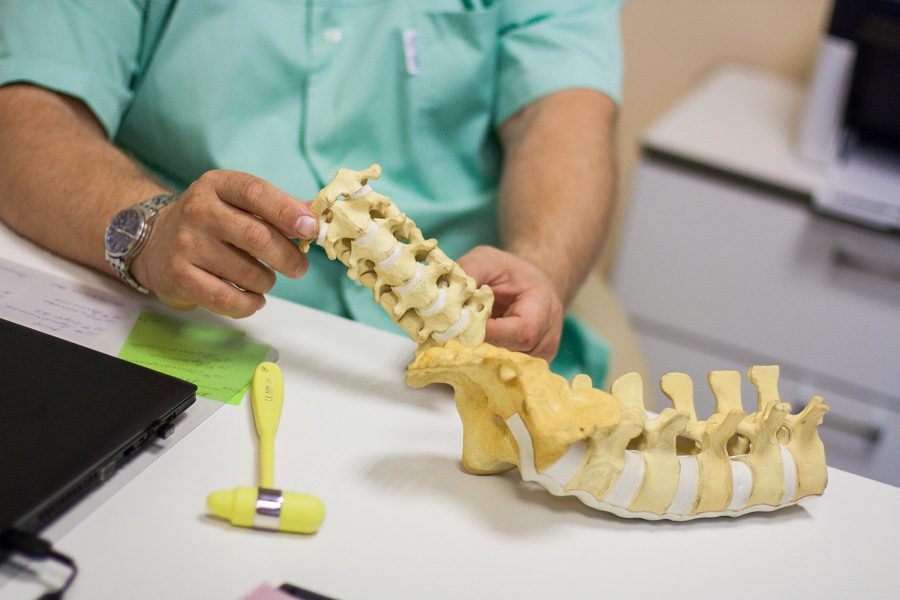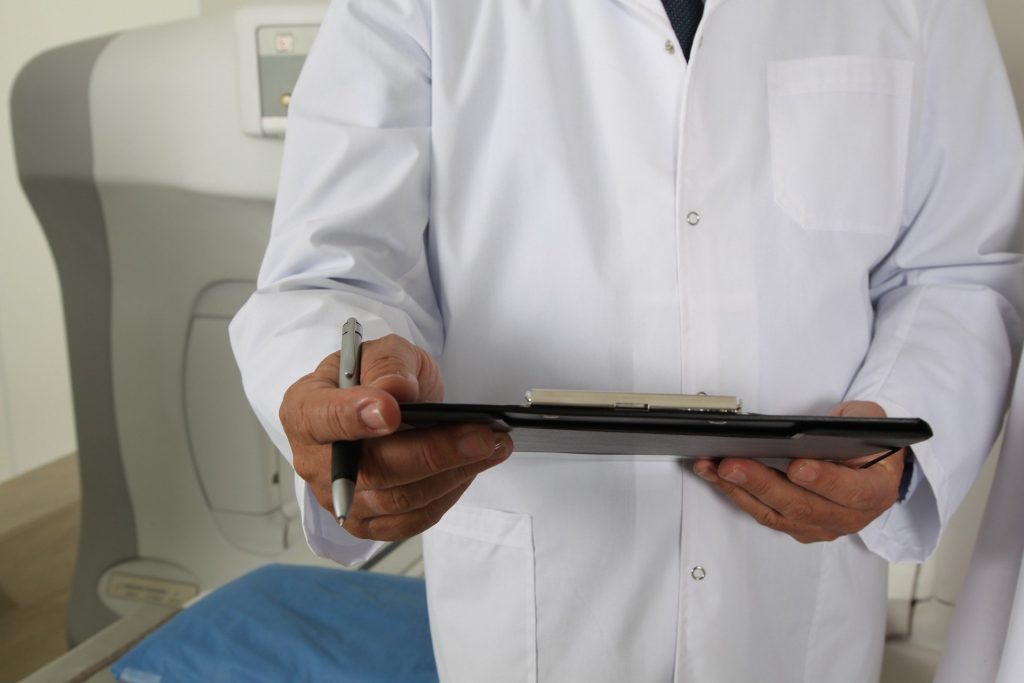- What is a Rhizotomy Procedure?
- How to Prepare for the procedure?
- What Happens After the Procedure?
- What are the Risks and Possible Complications of Rhizotomy?
- Finding Pain Relief

Sometimes, it requires a surgical procedure to relieve chronic back pain. Though surgery is a last resort, the rhizotomy procedure is one of the least invasive procedures used to help people suffering from back pain, muscle spasm, and pain when moving the back in a certain direction.
What is a Rhizotomy Procedure?
The word “rhizotomy” is not familiar to most people. Its origins are two root words, which mean root (rhizo-) and incision (-tomy). For back pain, the rhizotomy procedure is the severing of nerve roots at a facet joint in order to interrupt pain sensations. Used to help relieve severe chronic back pain, it has brought relief to people who had tried other treatments with no success.
This procedure is frequently used when there are facet joint issues in the lumbar spine or lower back. Each vertebra is linked with two facet joints to the next vertebra in the spine. Each facet joint contains a medial nerve, which is the source of sensation in the joint. When the medial nerve is impacted, great pain can develop.
The facet rhizotomy procedure for pain management has successfully enabled many patients to once again enjoy daily work and home activities without pain.
There are two main types of rhizotomy procedures.
The surgeon uses a needle to deliver a microelectrode to the targeted nerves. Fluoroscopic x-ray guides needle insertion and placement. The microelectrode generates heat to disable the nerve causing the pain.
- Endoscopic procedure
A tiny camera travels through the nerve branch, helping the surgeon locate the exact nerves causing the pain. Once located, the nerves are cut with a small incision.
Patients who undergo a rhizotomy procedure usually have certain conditions causing back pain. For example, patients with axial back pain (pain in one spot or region), but without leg pain that is due to narrowing lumbar facet joints, often benefit from the rhizotomy procedure. People with facet osteoarthritis (arthrosis) can also benefit from the procedure, once again when the back pain is limited to a certain area, and there is little radiating pain or spinal disc instability.
How to Prepare for the Rhizotomy Procedure?
The physician will perform certain diagnostic tests to make sure, as much as possible, the nerve causing the source of pain has been correctly located. You also will bring your doctor any imaging records for review that were taken in the past.
Preparing for the procedure requires some simple steps.
- Stop taking aspirin for two weeks before the procedure because it can cause blood thinning
- Stop taking other blood-thinning drugs for a minimum of five days before the procedure
- Stop taking anti-inflammatory drugs for a minimum of five days before the procedure
- Make sure the physician reviews the list of medications you are taking
- Do not eat, drink or take pain medications for four hours or more before the procedure
- Be sure to have a friend or family member take you to and from the procedure
What Happens After the Procedure?
An anesthetic is used during the procedure; so post-rhizotomy, you will need to be observed for up to 12 hours after the procedure. The length of observation time depends on how much anesthetic is used, the patient’s response to the anesthetic and whether IV sedation is administered.
How painful is the facet rhizotomy procedure?
Each patient has a unique experience. If the patient is expected to experience significant facet rhizotomy procedure pain or has a low pain tolerance, IV sedation may be recommended by the doctor.
If IV sedation is not involved, the observation time is shorter. IV sedation is chosen to minimize the pain experienced during the procedure.
What can patients expect?
Some of the side effects of rhizotomy are:
- Back pain may return for a week or so after the anesthetic wears off and the wound is still healing
- Some swelling or bruising may develop at the injection site
- Within 4 weeks, you should experience chronic pain relief
The physician might recommend physical therapy to strengthen back and core muscles.
The nerve will grow back, which is why it is important to improve core and back muscle strength. A strong stable back is less likely to develop a painful condition requiring surgery. A rhizotomy will typically keep pain at bay for up to 12 months.

What are the Risks and Possible Complications of Rhizotomy?
There are always risks and potential complications associated with any medical procedure. The good news is that risks and complications are low for a rhizotomy procedure. They include:
- Allergic reaction to the IV sedation or other medications
- Dizziness
- Temporary arm or leg muscle numbness or weakness due to the anesthetic
- Discomfort at the injection site
- Headache
There are some possible rhizotomy complications that do not happen often, but they can be serious. When they occur, it is important to get medical attention right away. They include an injection site that appears to be infected, arm, or leg weakness that gets worse or never goes away after eight hours and/or severe pain at the injection site or back pain that gets significantly worse.
If you develop a fever or chills or start vomiting, please see a doctor right away. The same is true if bladder or bowel dysfunction develops.
Finding Pain Relief
The rhizotomy procedure is common today when the patient’s medical condition justifies it. It can take up to 2-4 weeks for the pain to improve, but patients are relieved to once again enjoy life activities.